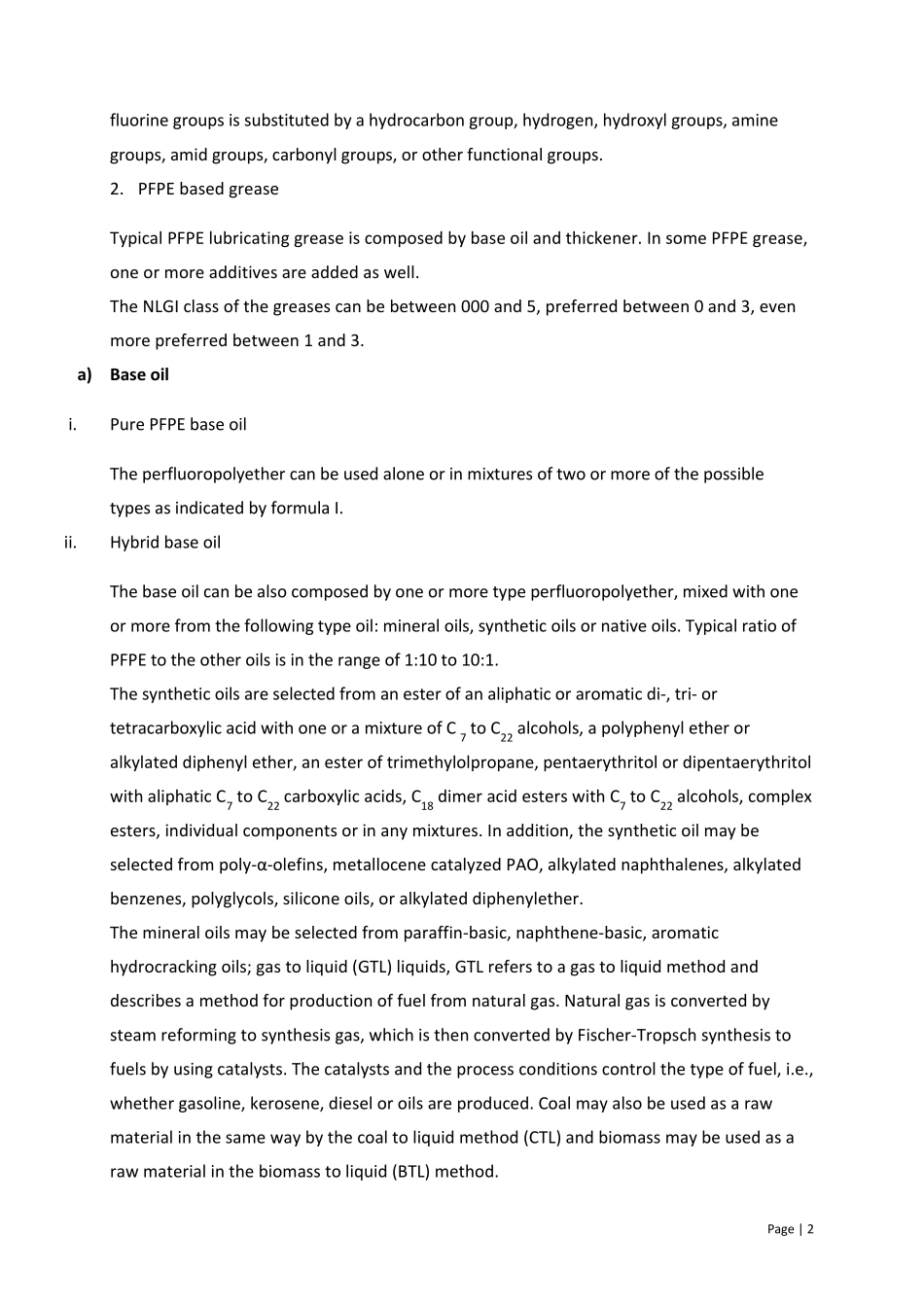Page | 1 PFPE Lu bricating Grease Dr. Martin Schweigkofler, Dr. Stefan Grundei, Dr. Wallace Zhang, Jocelyn Zhao Dr. Thomas Kilthau, Dr. Martin Schmidt-Amelunxen, Dr. Stefan Seemeyer, Klüber Lubrication München SE & Co. KG Klüber Lubrication Industries (Shanghai) Co.,Ltd. Abstract The paper discloses lubricating greases which contain perfluoropolyether. Composition 1. PFPE oil Lubrication greases use base oils like mineral oils, native oils, and synthetic hydrocarbon oils, such as PAO, alkylated naphthalines, alkylated phenylethers, silicone oils, ester oils, polyglycols and so on. All these base oils contain hydrogen bonded to Carbon, i.e. CH, CH2 and CH3 groups. These base oils cannot be used at very high temperatures and can react with different chemicals like oxidizing materials. Some of them are not sufficiently stable against hydrolysis or nucleophilic substances, e.g. amines. These hydrocarbon oils can also have a strong undesired impact on seal materials or components made out of plastics such as POM, Polyamides and PEEK. These weakness can be minimized or avoided by using Perfluoropolyether (PFPE) of the general formula X´O(CF2O)m(CF2CF2O)n[CF2CF(CF3)O]s [CF(CF3)O]u(CF2CF2CF2O)vX (I) As base oil or part of the base oil. In drawing (I) the perfluoroalkyloxy units can be distributed randomly throughout the chain. The subscripts m, n, s, u, and v can independently be 0 to maximal 200. The molecular weight of the material for example determined by the ratio of the terminal groups compared to the internal groups via NMR analysis can be up to 20000 u. The kinematic viscosity of the perfluoropolyether can be between 5 and 2000 mm²/sec at 40°C, more preferable between 15 and 1300 mm²/sec. The pour ...


